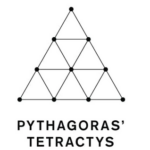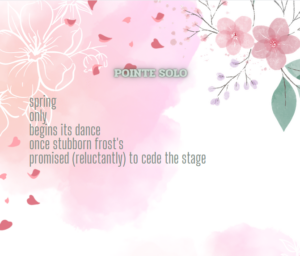That gifted mathematician of classical times, Euclid, called the tetractys a true mystical symbol. A tetractys was a Pythagorean arrangement of 10 points in the form of a triangle with 1 point in the first row, two in the second, three in the third, and four in the fourth. Over time, that these numbers add up to a perfect ten came to be not just a mathematical thing, but many believed it to be quasi-spiritual and religious somehow. 1980’s English poet Ray Stebbings based his new poetic form on this triangular point pattern, substituting syllables for points in a pattern he called Britain’s “answer” to the haiku. True or not, this form has a triangular form (although I tweak that frequently by left or right justifying it), twenty syllables, and with its five lines it also falls under the categorization of cinquain.
Because the final line is ten syllables, rather wordier than a single syllable Crapsley cinquain, the syllabic difference can feel garrulous at first, and the ending kind of overdone. It’s a work in progress! I switched topics to the natural world, to give myself more space to play with this one:


I see what you mean about that last line! Looking forward to reading on to see how you Tanita-ize it!